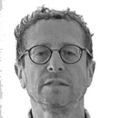The first thing you notice in Givat Shaul, the Jerusalem neighbourhood I work in, is the number of children. That’s hardly surprising. Givat Shaul is one of Jerusalem’s many ultra-Orthodox neighbourhoods.
For the Haredim (”God-fearing” in Hebrew) having children fulfils a key mitzvah (”good deed”) derived from the divine injunction from Genesis, in which God, after having created the world and all in it, commands: “Be fruitful and multiply and fill the Earth.”
And for the Haredim the more the better. The average Haredi family has almost seven children – far higher than any other demographic in Israel.
The ultra-Orthodox are the future of Israel. The share of Haredim in Israel’s population doubles every 25 years. Already one in four Israeli children aged under five are Haredi and the community is expected to make up 16 per cent of Israel’s Jewish population by the end of the decade.
READ MORE
The exponential growth of the ultra-Orthodox population creates serious challenges for Israel. “They don’t work, they don’t pay taxes and they don’t serve in the army,” is the standard Israeli mantra describing the community. This is, of course, an over-simplification, representing the hostility felt by many Israelis towards the ultra-Orthodox. At the same time this sentiment is not wide of the mark.
With the focus on religious study Haredi children are often not taught core subjects such as English and maths. Participation in the workforce for Haredi males is the lowest for any Israeli cohort. Those who can will devote their lives to studying Torah (the Old Testament) in the plethora of yeshivot that can be found in all ultra-Orthodox neighbourhoods. Often the woman is the chief breadwinner even though she is also tasked with raising the children.
Consequently the community is the poorest in Israeli society, relying heavily on government welfare or charity.
Ultra-Orthodox households don’t own televisions or read secular newspapers. Their own newspapers will never show a picture of a woman and follow a totally different agenda from that of mainstream Israel, which is naturally fixated on the Gaza war and has been for nine months.
For most Israelis anxiety is sky high. The number of soldiers killed in the Gaza war rose to 660 over the weekend. Everyone knows someone who has been drafted and is serving on reserve duty in Gaza or on the northern border with Lebanon, where the possibility of full scale war remains a distinct possibility. Everyone knows at least one of the hostages, at least indirectly.
But the ultra-Orthodox live in a different reality. They don’t have relatives and friends at the front and none of the hostages is ultra-Orthodox. On Monday Israel buried 10 soldiers but in Givat Shaul it was a routine day.
The exemption from mandatory military service granted to the ultra-Orthodox (although a small number opt to enlist) has now become intolerable to other Israelis. Some reservists have already been called up three times since the October 7th Hamas attack and the army is short of soldiers.
But prime minister Binyamin Netanyahu knows that without the support of the ultra-Orthodox parties his coalition will collapse. The high court has ordered the government to end the discrimination which favours the Haredim but the ultra-Orthodox have made it clear they will quit the government if the draft is extended to yeshiva students.
On Sunday the government extended by a year the retirement age for army reservists.
So for now the pace of life continues in Givat Shaul unimpeded. Mothers push their double buggies with older children in tow and the men walk to and from the yeshivot and synagogues. The war, and the conflict as a whole, could be on another planet.
But it’s there: you just have to look closely.
In the middle of Givat Shaul, on a street full of religious seminaries, lies the Kfar Shaul psychiatric hospital. It’s not easy to enter: I’ve tried. The security guards ask you for the name of the patient you wish to visit.
But if you walk around the perimeter fence you can spot the old Arab houses amongst the newer buildings. These Arab buildings were once part of the Palestinian village of Deir Yassin that back in 1948 was a strategically important village on the approach road to Jerusalem.
Deir Yassin has a mythological status in the Palestinian narrative. It was captured in April 1948, just a few weeks before Israel’s establishment, by forces from the right-wing Zionist Irgun (led by Menahem Begin) and Stern Gang militias. More than 100 villagers were massacred and the news of the events of Deir Yassin spread fear throughout the Palestinian population, prompting hundreds of thousands to flee. The consequences are still with us today.
You can rest assured that none of the yeshiva students who study on the same street as the Kfar Shaul psychiatric hospital are aware of the history of Deir Yassin. They’ve probably never heard of Deir Yassin. Their focus is on Torah study and avoiding the military draft.
- Sign up for push alerts and have the best news, analysis and comment delivered directly to your phone
- Find The Irish Times on WhatsApp and stay up to date
- Our In The News podcast is now published daily - Find the latest episode here


















